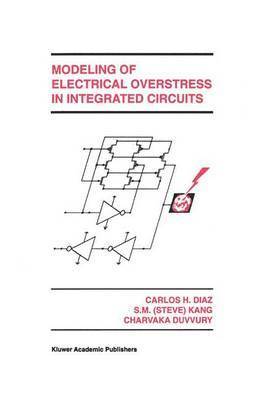
- Format
- Häftad (Paperback / softback)
- Språk
- Engelska
- Antal sidor
- 148
- Utgivningsdatum
- 2012-09-27
- Upplaga
- Softcover reprint of the original 1st ed. 1995
- Förlag
- Springer-Verlag New York Inc.
- Medarbetare
- Sung-Mo (Steve) Kang / Duvvury, Charvaka
- Illustrationer
- XXV, 148 p.
- Dimensioner
- 234 x 156 x 10 mm
- Vikt
- Antal komponenter
- 1
- Komponenter
- 1 Paperback / softback
- ISBN
- 9781461362050
- 259 g
Modeling of Electrical Overstress in Integrated Circuits
- Skickas från oss inom 7-10 vardagar.
- Fri frakt över 249 kr för privatkunder i Sverige.
Passar bra ihop
De som köpt den här boken har ofta också köpt The Anxious Generation av Jonathan Haidt (inbunden).
Köp båda 2 för 2457 krKundrecensioner
Fler böcker av författarna
-
Electrothermal Analysis of VLSI Systems
Yi-Kan Cheng, Ching-Han Tsai, Chin-Chi Teng, Sung-Mo Kang
-
Design Automation for Timing-Driven Layout Synthesis
S Sapatnekar, Sung-Mo Kang
-
Hot-Carrier Reliability of MOS VLSI Circuits
Yusuf Leblebici, Sung-Mo Kang
-
Physical Design for Multichip Modules
Mysore Sriram, Sung-Mo Kang
Innehållsförteckning
1 Electrical Overstress in ICS.- 1.1 Definition of Electrostatic Discharge Phenomena.- 1.2 Impact of ESD on IC Chip Technologies.- 1.3 Protection Strategies for Reducing ESD Effects.- 1.4 ESD Models and Qualification.- 1.5 EOS Models and Qualification.- 1.6 Previous Work on ESD/EOS Device Failure Modeling.- 2 NMOS ESD Protection Devices and Process Related Issues.- 2.1 ESD Phenomena in nMOS Devices.- 2.2 Failure Modes in nMOS.- 2.3 Protection Technique Using nMOS Device Structures.- 2.4 The Impact of Process Technologies on nMOS ESD Behavior.- 2.5 Advance nMOS Device Protection Concepts.- 3 Measuring EOS Robustness in ICS.- 3.1 Statistical Distribution of EOS/ESD-related Failures.- 3.2 Characterization of Bipolar Devices.- 3.3 EOS Characterization of nMOS Devices.- 3.4 Summary.- 4 Eos Thermal Failure Simulation for Integrated Circuits.- 4.1 Nomenclature.- 4.2 ITSIM: A Nonlinear Thermal Failure Simulator for ICs.- 4.3 Simulation Results for Ceramic and Plastic Packages.- 4.4 Summary.- 5 ITSIM: A Nonlinear 2D - 1D Thermal Simulator.- 5.1 Introduction.- 5.2 Running the Program.- 5.3 Input File.- 5.4 An Example.- 6 2D Electrothermal Analysis of Device Failure in Mos Processes.- 6.1 Device Level Electrothermal Simulation.- 6.2 Comparison of Experimental and 2D Electrothermal Results.- 6.3 Summary.- 7 Circuit-Level Electrothermal Simulation.- 7.1 Temperature Effects and Device Models.- 7.2 Simulation of Avalanche Breakdown.- 7.3 Temperature Model for Electrothermal Simulation.- 7.4 iETSIM: An Electrothermal Circuit-Level Simulation Tool.- 7.5 Summary.- 8 IETSIM : An Electrothermal Circuit Simulator.- 8.1 Introduction.- 8.2 Running the Program.- 8.3 Input File: Circuit Description and Format.- 8.4 Low Temperature Thermometer Example.- 9 Summary and Future Research.- 9.1 Summary.- 9.2 Future Research.- About the Authors.


